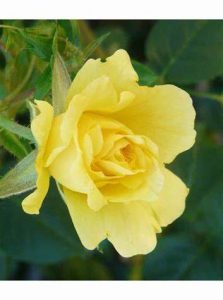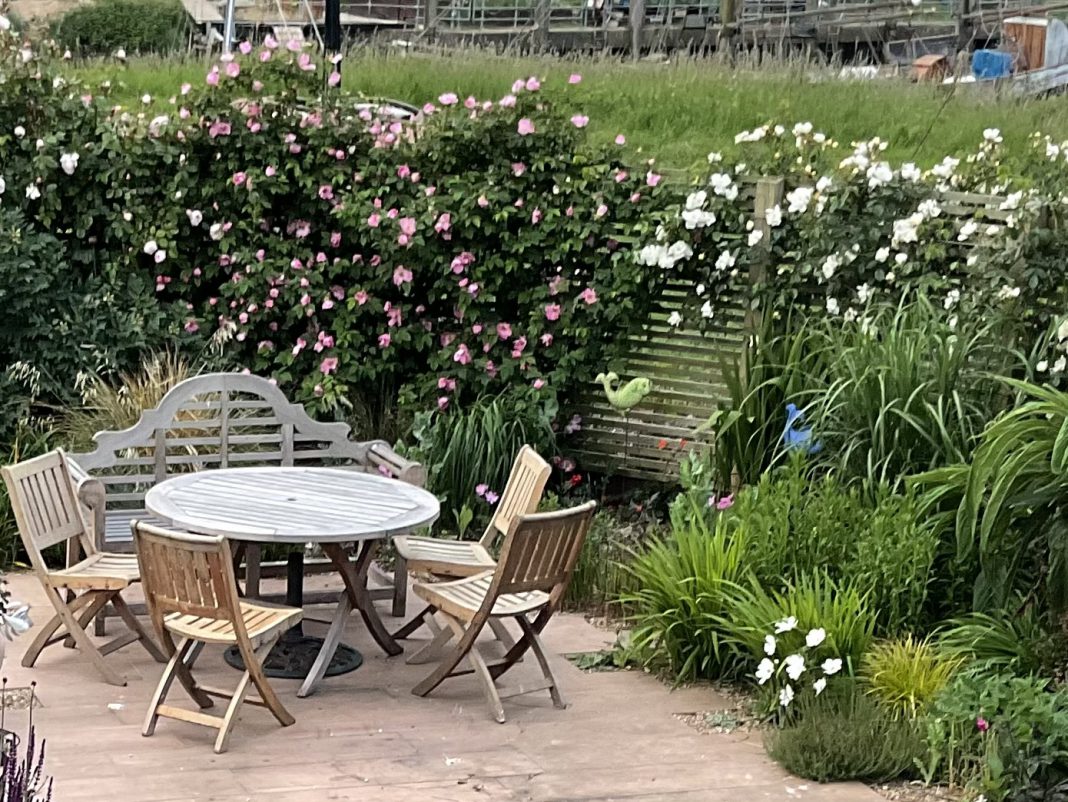Down on the allotment, that wonderful autumn smell of fallen apple and pear permeates the air. A huge shout-out to Seana Lanigan for her article on apple-pressing on October 6. There is still a bounty of apples on the ground, so have a go at cider making. Robins are singing their territories from high branches, and the sharp scold of wrens take note of wandering cats amongst the blackberries.
The autumn struggle to finish harvesting, cutting and pruning is upon us all. September has had sun-heat days, and good rainfall. And that means weeds are growing fast. Frequent tilling with a swoe (our favourite long handled hoe that looks like a golf putter) is easier now, and means weeds and their roots can be easily cut and raked away. Pumpkin and squash are drying in the shed and most of our plot is cleared, thanks to the zeal of my husband. What is left? We will leave leek, beet and chard to over-winter. But our kale has been decimated by wood pigeon. In the privacy of our old garden, we learned to love grilled wood pigeon with a berry sauce. This “pigeon management” is not possible in the middle of an allotment with close neighbours, so we will try better netting and see if they can recover.
The last of our tomatoes have been picked from the allotment, ripened or not. This year we have put all green tomatoes in cardboard boxes with newspaper and banana skins to ripen, versus leaving our greenhouse ones still on the plant. Over the last three weeks, the ones in boxes have ripened much faster – turning from hard green to soft red. So, from our little experiment, we will be picking the rest of the greenhouse ones too. The greenhouse is still filled. It is that October balance between “clear and clean up” versus “leave to try to ripen”.
In our flower garden, pruning our climbing roses is now top priority. We always get awful winter wind and long branches whip and snap, causing damage to fence and neighbouring plants. People talk about roses in June – when they are all blooming and fabulous and fill the air with fragrance. But October? For me, this is the season when the real “winners” show off. For they are even now in flower. They still give pleasure and haven’t succumbed to black spot and aphids.
Whenever you take over a garden, you inherit its plants. I don’t feel bad digging out things I don’t like. But roses? In our last garden, there was a carefully constructed rose garden, including a lovingly-painted picture, labelled with each of their names. Precious to the owners of long ago, but they were a disaster many years later for us: the roses had been shaded out by trees, were full of disease or were simply ugly strugglers. We tried to improve them over the next 10 years; to re-home them, to love them. And finally, we chose the ones we liked, made cuttings, and took the baby plants to our new garden in Rye.
Now, we are trying to decide what roses we could buy for a couple of bare patches in the garden. A rose takes careful planning. It is often chosen for a specific event, person or memory. Asking people for their own choice has brought a bounty of heart-felt suggestions:
- Golden Anniversary: gift to parents to celebrate
- Margaret Merrill: in my wedding bouquet
- Queen of Sweden: deer managed to kill all other roses. It grew taller and survived
- Tequila sunrise: husband’s favourite cocktail
- Zephirine Drouhin: covered our childhood climbing swing
- Albertine: father’s favourite fragrance, even when it dragged down his prize apple tree in a storm
- Complicata: lit up our London garden and introduced us to neighbours asking how anything could be that luminescent
What about celebrating the Queen? Something like jubilee, or Elizabeth…
Our Rye garden is quite small, and I have a rule for the flowers: they need to last for at least a month; they need to have fragrance and they need to be attractive to bees or other wildlife. With roses, I should also include “repeat flowering” and “not prone to blackspot”.
Where to go to find the perfect rose? I start with a book: The Rose Expert, by Dr DG Hessayon. Our copy is 30 years old and still a useful base for information. Then I call up either Peter Beale or David Austin nurseries. I give them my criteria and they tell me what they think.

But, if I have the patience, I should just wait until next spring. We are so lucky to have an expert rose grower living near Rye. Jon Banham took over from his father to run The Old Rose Nursery in Northiam. They are closed now until February, but whenever I have gone to the nursery and asked for a specific rose, Jon has responded with: “I thought you wanted one with a strong fragrance?” or “That one is going to hate your garden” and he has chosen for me a much better plant. Our favourite rose in our garden is called Gardener’s Glory.
Chosen by Jon after he dismissed my latest choice. It is still in flower in sunshine-yellow; it still smells wonderful; and the heat and aphid attacks of this summer have not stopped it. So, I shall try to be more patient and wait for his nursery to open once more…
Image Credits: Abigail CH .




Thank you for such an interesting article Abigail, We have an allotment in Rye & have turned a third of it into a flower garden mainly because we don’t have a garden at home. Roses have become a bit of an obsession lately due to never being drawn to growing them previously, and the taking of cuttings from other allotmenteers (permission asked) has proved such an amazing success! One of this years successful cuttings is currently flowering it’s sock off & smelling delightful, who would have thought it would be so easy! I shall certainly visit the Old Rose Nursery in Northiam, previously unknown to me, & treating myself to some ready grown specimens with the advice of Mr Banham!